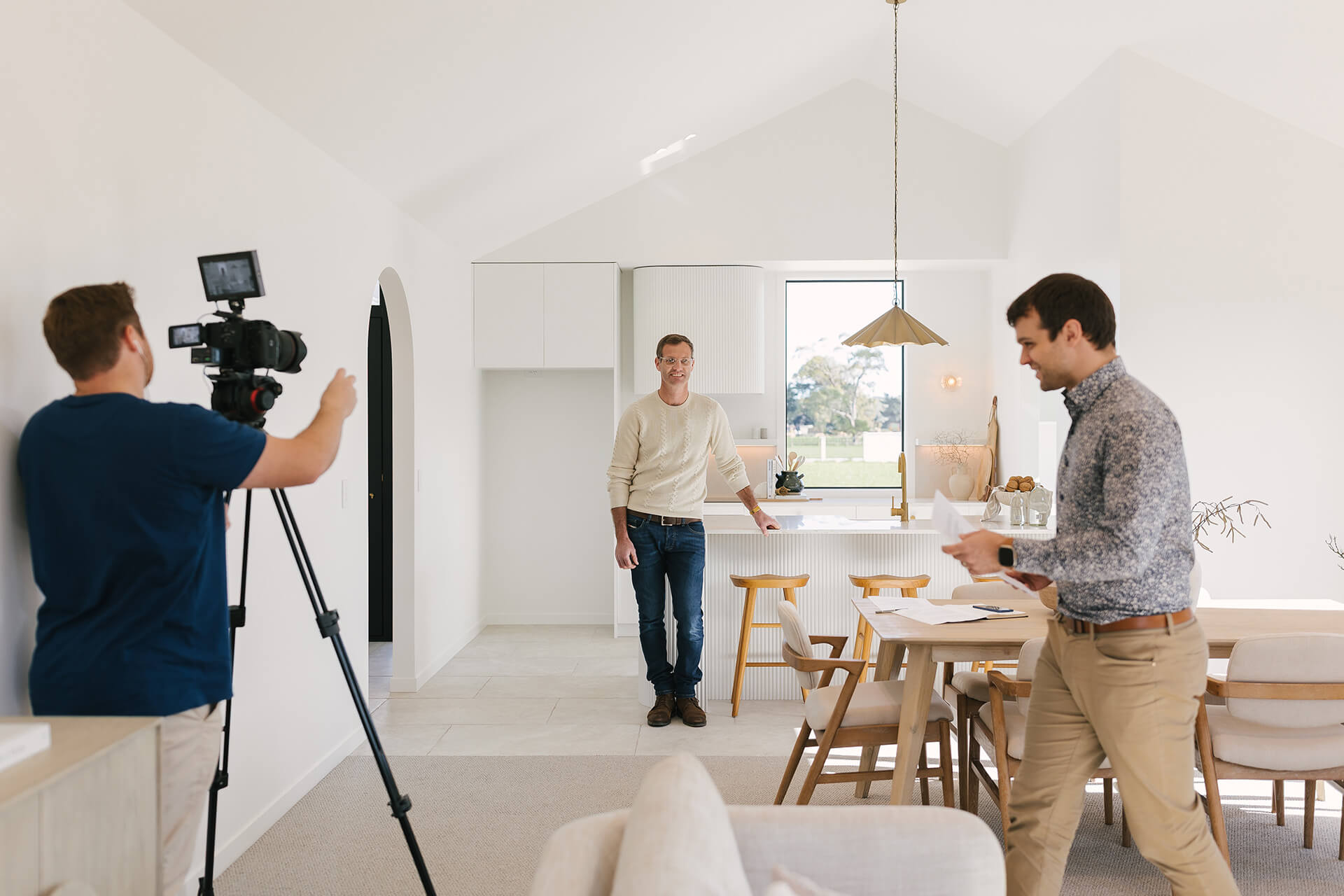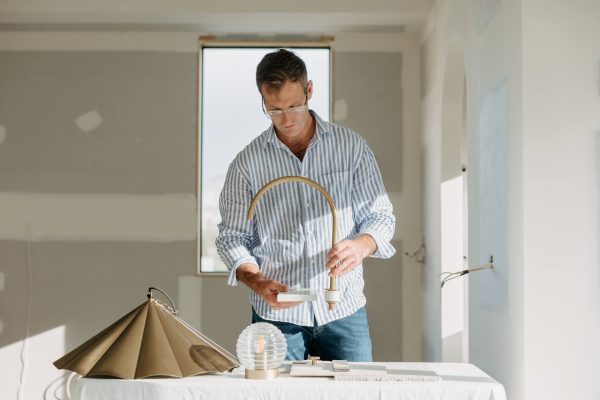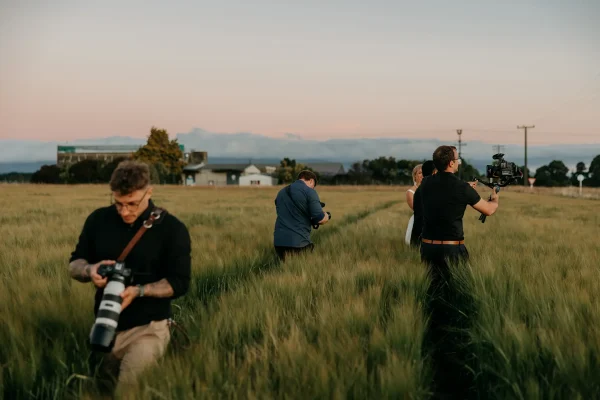
Being in front of the camera can be a daunting task, however with the right preparation and support, the process will be seamless and even enjoyable! To make the experience as pleasant as possible, we have put together this step by step guide on what to expect when filming an interview style video. There are two main elements that form an interview style video. These elements are known as PTC and B-Roll.
PTC Footage
PTC stands for ‘person to camera’ and refers to the section of the video where the speaker delivers their message, looking either directly into or just beside the camera lens. We break this part down into manageable bite size pieces that are edited seamlessly together. This helps achieve a consistent message, while taking away the pressure to deliver the content all in one take.
It can be difficult to relax when you have a camera placed in front of you, which is why we aim to keep the filming experience as comfortable as possible. A great way to achieve a confident, clear message is to talk as if you’re having a genuine conversation, rather than delivering a speech. We find it easiest to approach things in a question and answer format. To do this, we would have someone standing just beside the camera, out of shot, asking the speaker open ended questions about the video topic or message. Once we know what you want to communicate, we can form questions that, when answered by the speaker, deliver your key messages in comfortable and authentic way.
Here’s an example:
Brief: Company X would like a video promoting their involvement in Relay for Life, an annual fundraising event for the Cancer Society. They would like to explain who they are, why they participate and encourage other businesses to jump on board.
Avodah: “Could you tell us a bit about why you’re involved in Relay for Life and how you initially became a sponsor?”
Company X representative: “Relay for Life is an event that is really close to our hearts. Initially we became a sponsor because….”
Because the initial question won’t be part of the final video, it is important to integrate the question into the opening sentence of your answer. This will make the video flow seamlessly.

B-Roll Footage
To help create context and make the video more visually engaging, we incorporate what we call B-Roll footage. This footage is generally made up of actions or scenery and relates to the message that the speaker is delivering. For example, if you were talking about company culture, we’d capture footage of your team engaging with each other at work. These secondary images are often presented without sound – instead the audio from the PTC footage continues on. We find it’s best to film the B-Roll footage after the PTC footage. This is so we can make sure the B-Roll links nicely to the what has been said in the interview.
Once the filming is completed, the B-Roll footage is combined with the PTC footage to form an interesting, informative video that keeps viewers entertained for the duration.

Target Audience and Tone of Voice
Understanding exactly who you’re talking to (your target audience) is a crucial factor in creating a successful video. Having this clearly defined from the outset will help ensure the content of the video resonates with the people watching it.
Once you’re clear on who you’re talking to, you want to think about the best way to talk to them. We call this ‘tone of voice’ and it’s influenced by your brand personality. Is your brand chatty and casual, or authoritative and direct. Cool, calm and collected, or a big ball of energy? Does your brand love to spin a good yarn or cut straight to the point? If this is new to you, we’ve put together our tips on understanding your brand personality and tone of voice.
This is a part of the process we really love, so it you’re not sure how to define your target audience or what tone of voice would work best, please don’t hesitate to discuss this with us.




